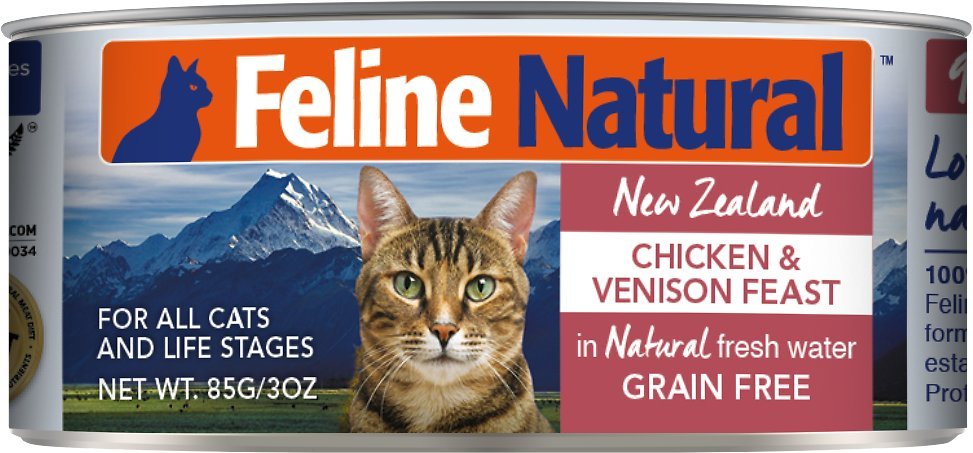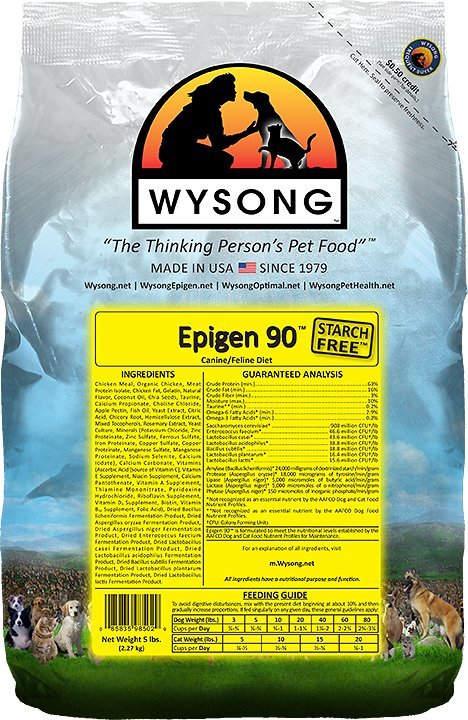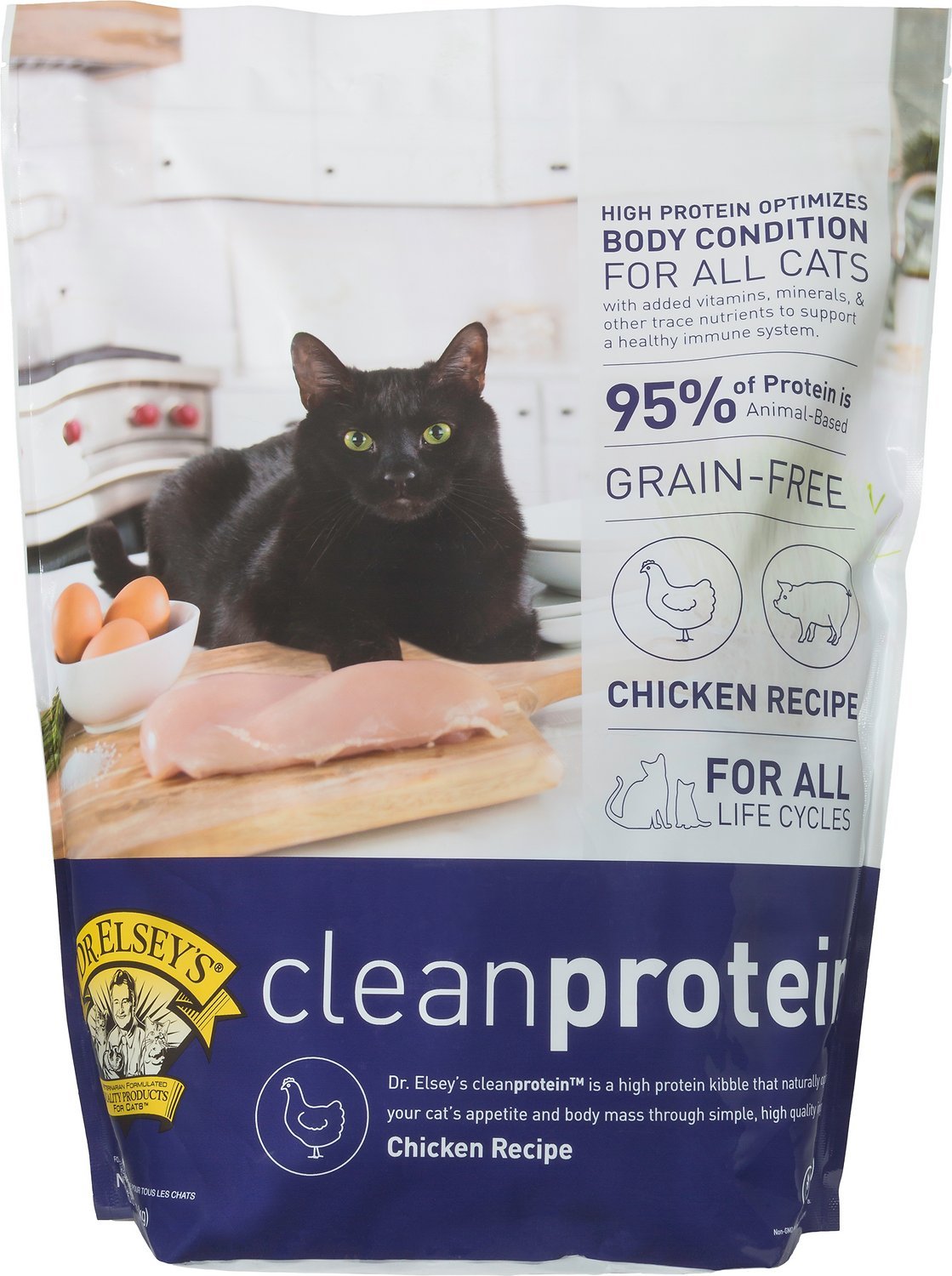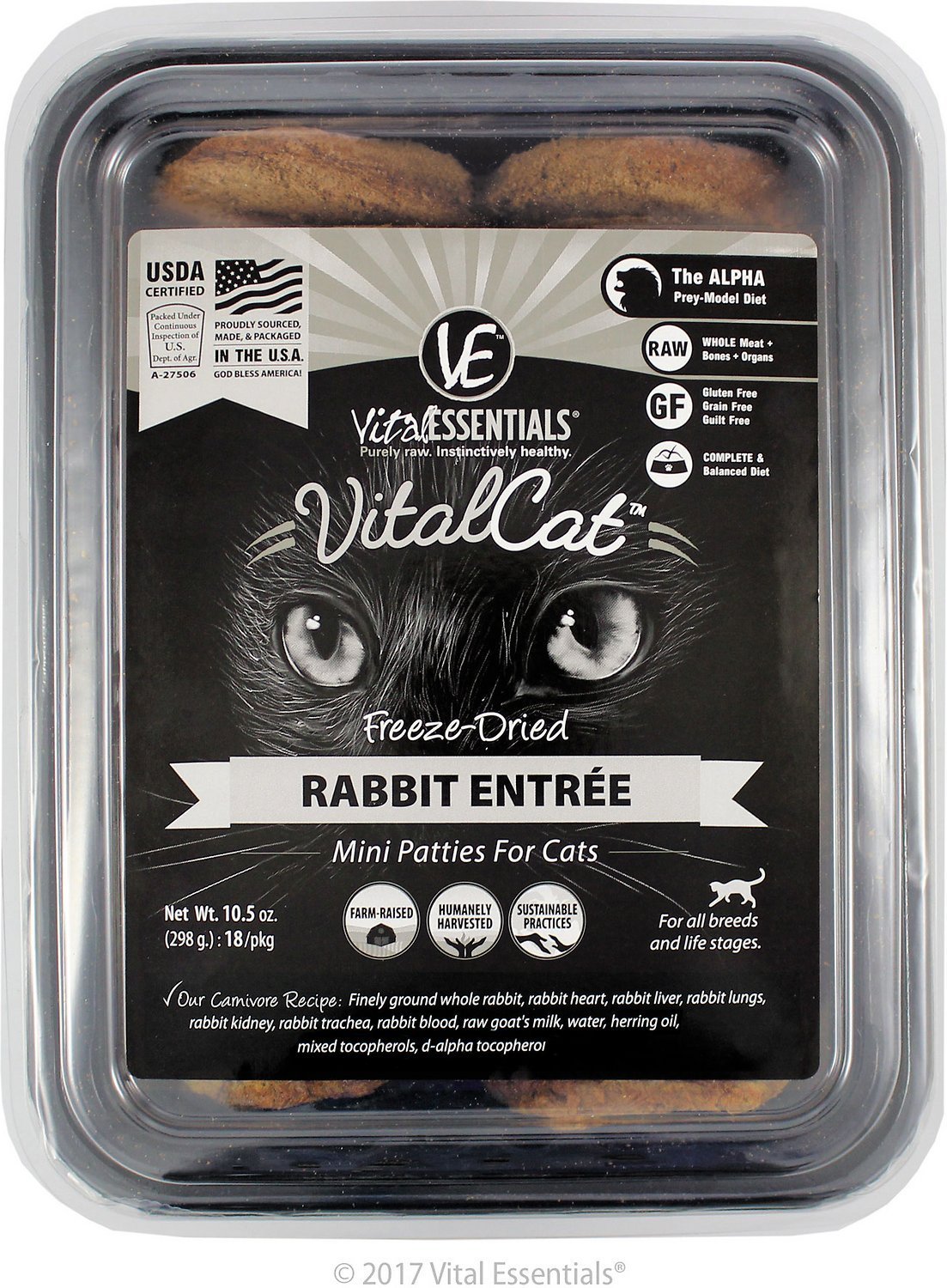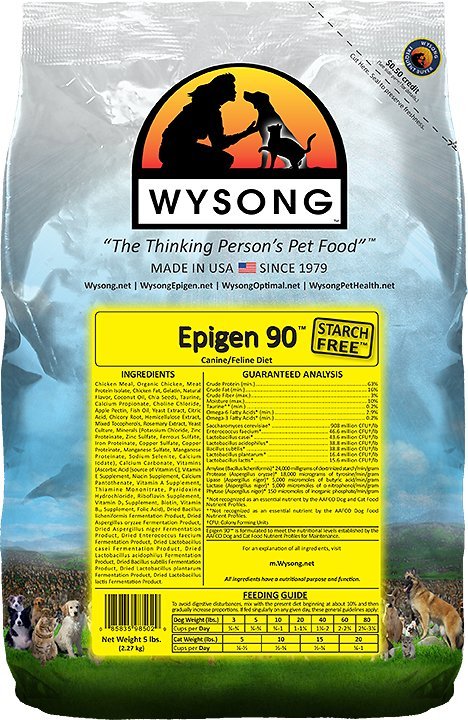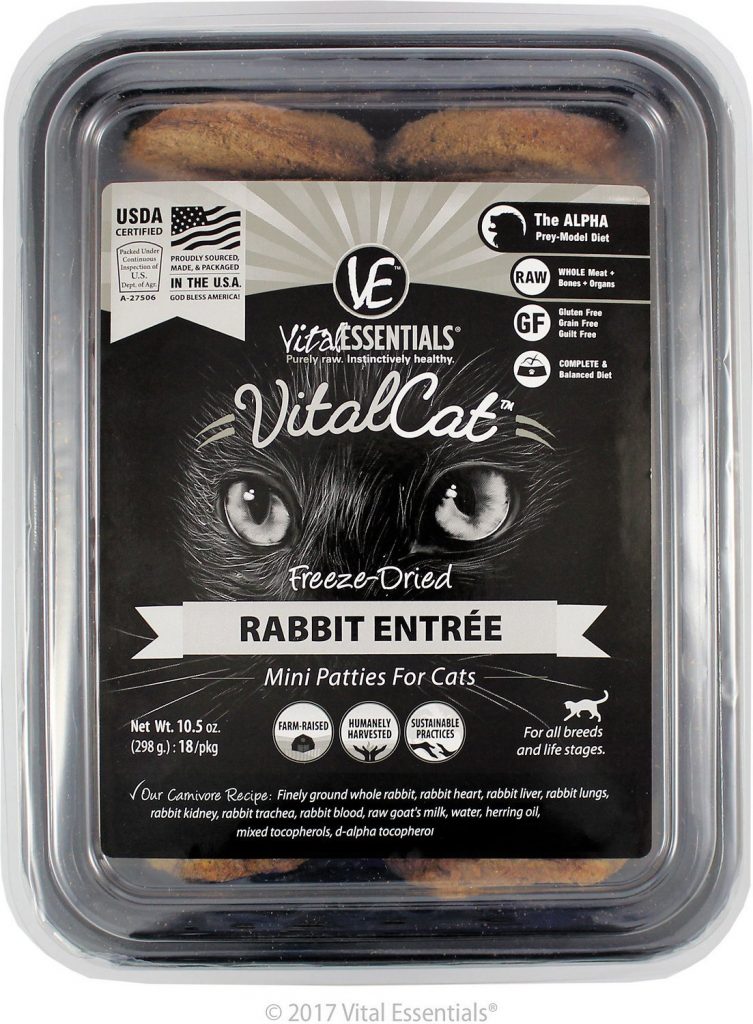The Oriental Shorthair cat is one of the most intelligent, diverse, and curious cats out there.
The Oriental kitty originates partially from the popular Siamese cat, and it comes in two versions depending on the length of its fur – the Oriental Shorthair and the Oriental Longhair, which is also known as the British Angora.
Like all cats, you’ll need to provide a very protein-heavy diet. Whether it’s dry, wet, or homemade is up to you. Each has benefits and drawbacks. Just ensure that you’re not picking a food full of fillers and that an excellent protein source is the first ingredient.
Of course, to keep any cat happy and healthy, you should be feeding it a biologically appropriate diet.
That means it must be:
- High in protein
- Low in carbohydrates
- Moderate in fats
It should also be:
- Full of real, named meat ingredients, including organs
- Absent of fillers like corn, wheat, and starches
- Full of vitamins and nutrients, or whole food versions that contain them
Here’s Why We’re Qualified To Talk To You About This
We put together a massive internal database (which we’ll be releasing to the public soon), of over 2000 cat foods.
We collected data from calories to macronutrients to ingredients to how they compare to the average.
We then used both formulas and a bit of common sense to score each food out of 5.
We looked at studies to find out what cats should really eat.
We have dedicated hundreds of hours, now, to cat food research, and have the data to back it up!
We’ll be drawing on the data we collected to recommend some of the best foods below.
Our review process is unbiased and based on extensive research. If you buy through the links on our site, we may earn a commission.
Do Oriental Kitties Need Specific Food?
Not really.
Some brands have “Oriental Specific” dry food options.
However, these “specialty” foods are typically full of horrible ingredients like corn and “meat by-products,” which are not appropriate for your cat’s nutritional needs.
It’s all just a marketing gimmick.
Different breeds of cats are only different in terms of their looks, not their physiology or digestion.
People can have different hair colors, skin colors, eye colors, body sizes, or body shapes, and have the same basic dietary requirements. Similarly,cats can look a bit different, yet be pretty much the same when it comes to their nutritional needs.
That means that your precious Oriental isn’t that much different than a giant Maine Coon, or a furless Sphynx.
They all require the same, basic, non-complicated nutrient profile.
What Do Cats Eat In The Wild?
It’s important to learn what cats eat in the wild because…
Domestic cats are descendants of wild cats, and they are not very different biologically.
There just hasn’t been enough time or environmental pressure for them to evolve significantly.
Therefore, what a cat chooses to eat in the wild, should be pretty close to perfect, since eating the right food is about the most important, primary drive for any animal.
And there is research to back this up.
To start, let’s look at domestic cats.
In one study, when given the option between a number of commercial pet foods, cats tended to eat the foods that gave them the following macronutrient breakdown (dry matter basis):
- 52% protein
- 36% fat
- 12% carbohydrate
That’s pretty different than most pet foods…especially the brands who claim they make “breed-specific” foods.
Ok, now let’s look at the data from a compilation of studies on wild cats.
These studies all looked at feral or stray cat populations. They covered multiple continents and a variety of environments (near the sea, rural, urban, etc.).
Here’s the macronutrient breakdown, on average, of what cats eat in the wild (dry matter basis):
- 63% protein
- 23% fat
- 3% carbs
Wow!
So much different than most commercial pet foods.
What you should be looking for, then, is a high protein, moderate fat, low carbohydrate food.
That food should get most or all of it’s protein from named meat sources (i.e., chicken, not “meat by-products”).
After all, the foods cats were eating in the wild were almost exclusively animals. Rats, mice, rabbits, birds…
It should have minimal fillers (things like corn, rice, wheat, etc.).
OK, So Now What?
Alright, so we could have just picked some random foods and told you they were “perfectly designed” for your special kitty.
Buuut, that would be completely unethical and wrong.
It’s up to you whether you believe us and the data, or whether you believe the big companies who tell you that “breed specific” foods should be full of corn, by-products, and other junk.
If you’re ready to leave the marketing mumbo jumbo behind, read on below to find out our top recommended wet, dry, and freeze-dried food options for your special kitty!
Our review process is unbiased and based on extensive research. If you buy through the links on our site, we may earn a commission.
Ratings Of The Best Cat Food For Oriental Kitties
Best Wet Food
Feline Natural
- Very limited ingredient
- Near-perfect macronutrients
- Green lipped mussel for joint health
Best Dry Food
Dr. Elsey’s cleanprotein
- Uses chicken and high-protein meat concentrates
- No added carbs
- Near-perfect macronutrient profile
Best Freeze-Dried
Vital Essentials Mini Patties
- High-quality meat ingredients, including organ meat
- Very close to a natural, wild diet
- Absolutely no fillers
One of the best canned foods you can choose, Feline Natural puts together a recipe full of various cuts of chicken and venison, including organs, which are super healthy for your cat.
It also includes New Zealand Green Lipped Mussels, a very unique cat food ingredient. This is a great addition because it is:
- another animal-based ingredient
- great for joint-health
- made from free-range, grass-fed chicken
There are really no artificial ingredients, additives, preservatives, or gelling agents.
The only drawback is it is a bit pricey.
While we recommend feeding wet food most of the time, since cats require a lot of moisture, but don’t have a strong thirst drive, this is the best of the dry foods out there.
Add a bit of water to it before feeding to make it even more appropriate to your cat’s needs.
Otherwise, it’s a show stopper.
Whereas most kibbles fail to break 40 or 50% protein, this one puts them all to shame with 70%.
It also has no carbs, and even uses gelatin as a binding agent, instead of a plant based or synthetic option, which is more popular.
The “meat protein isolate” sounds like a big no-no, since it’s an unnamed meat, but Wysong says it’s 100% pork isolate, and they’ve only labeled that because they interpret labeling laws in such a way that makes that the correct way to put it on the label.
Definitely one of the best choices if you feed dry.
We were surprised to see a real challenger to our #1 Wysong pick, but Dr. Elsey’s has delivered.
With chicken and pork protein isolate, they pack a huge amount of animal protein in right at the start.
Egg is a very bioavailable protein, full of amino acids and very digestible.
Again with no carbs, we see a very biologically appropriate macronutrient profile, close to what kitty would eat in the wild, as discussed above.
It has a lot of added vitamins and nutrients, but no digestive enzymes or probiotics, like our #1 pick.
It’s a fantastic option if your cat doesn’t like the taste of the Wysong brand for some reason, or if the shape of it isn’t right.
We believe that freeze-dried food has the potential to be the closest to a wild diet for your kitty.
The way the process is done locks in nutrients and flavors.
When you add water to “re-animate” it, you fulfill the moisture requirements, making it just about perfect.
This starts off with whole ground rabbit. That’s basically what your cat would eat in the wild.
It just so happens to be whole ground, for easier digestibility and eating.
It’s also full of additional organ meat.
The carbohydrate content seems to come from the raw goat’s milk (which is actually quite good for cats, since it’s unpasteurized and contains the enzyme that helps them break down lactose), so there are no added plants here.
Overall, this is highly appropriate for a feline.
And remember, the cost per pound goes down significantly when you add water to it. Your cat isn’t going through the package in a couple of bites, since it will expand and go further when rehydrated. Therefore the higher apparent cost per pound is a bit of a false signal.
About as close as you can get to a proper wild diet from a commercial pet food!
Oriental Cat Info and Health Issues
The Oriental cat has more than 300 patterns and color combinations!
These kitties actually have more colors and patterns than any other breed. The most popular colors among Oriental cats are the multi-colored and bicolored patterns, as well as the adorable tabby patterns.
Other than that this breed may appear red, silver, ebony black, white, salmon, creamy, brown, lilac, chocolate, apricot, blue, cinnamon, and so on. They can either have a solid color, a tabby pattern, a bicolor structure, a shaded pattern or a multi-patterned color.
The Oriental kitty has a signature triangular face. The elegant bone structure of the Oriental cat, the elongated, slender body and the large ears easily distinguish this particular breed from the rest.
Although it was partially derived from the Siamese, the Oriental usually comes with striking green eyes. Many Oriental cats have multi-colored eyes, but the green and blue hues are always prevalent in their wide-eye, almond-shaped stare.
This breed is sociable and extremely loud-mouthed!
Oriental kittens aren’t afraid to speak their mind. They can be extremely loud, especially when they want your attention. Their husky meow-ing and their loud purring aren’t suitable for a quiet, conservative, and strict home environment.
The Oriental cat is fascinating when it comes to its loyalty. It will constantly seek your attention and affection. If it doesn’t want to distract you from your work, your house chores or your everyday activities it will softly purr in your lap and will enjoy your presence to the fullest.
Basically, you’ll have a four legged companion following you around whatever you do.
If you want an intelligent cat, the Oriental cat should definitely be your first choice! This breed is the smartest!
On top of all that, it’s actually the best cat you can get if somebody in your household is suffering from allergies. Not only are Orientals hypoallergenic, but they also don’t shed as much as other breeds and their fur isn’t prone to matting.
Health risks
While the Oriental cat is considered as an overall healthy breed, there are some health risks.
Oriental Shorthair and Oriental Longhair kitties are prone to developing lymphoma or progressive retinal atrophy.
Unfortunately, there’s also the possibility of what experts call “brush burn”. This occurs in cases where severe brushing damages the kitty’s skin. Orientals have a thin coat of short hair, so they don’t require that much grooming and if you brush out the hair too hard, you might inflict a brush burn on your kitty.
And with a unique and fascinating cat like the Oriental, you’d definitely want to spoil it with biologically appropriate foods and to cater to its every command in return for some lovable purring.
The loyal, affectionate, vocal and playful kitten is great for big families.
It loves the attention and it will be the most intelligent pet companion for your cat-loving household. Make sure you feed it properly and it will be the best feline friend you can wish for!
A Bit More Reading..
We found these sources an interesting “gateway”, if you will, to the world of breed specific cat food and just how silly it is.
- Netflix’s “Pet Fooled” Reveals The 10 Big Secrets The Pet Food Industry Is Trying To Hide – IHeartDogs.com
- Breed Specific Nutrition? – TruthAboutPetFood.com
- Cats and Carbohydrates: The Carnivore Fantasy? – https://www.ncbi.nlm.nih.gov/pmc/articles/PMC5753635/
- Estimation of the dietary nutrient profile of free-roaming feral cats: possible implications for nutrition of domestic cats. – https://www.ncbi.nlm.nih.gov/pubmed/22005434 (full text downloaded as file name 2011_82.pdf)


